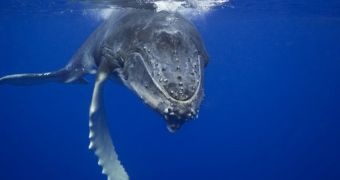Earlier this week, high officials in Chile announced that a new marine park had been established in the country's waters.
The protected area, dubbed Tic-Toc, spans over 90,000 hectares (roughly 222,394 acres). This means that its surface is nearly equal to that of Chile's capital.
On its website, green group the World Wildlife Fund details that this newly established park is the largest marine protected area to have until now been set up in continental Chile's waters.
The organization goes on to detail that, contrary to what some might assume, the government of Chile did not decide to grant legal protection to this region all on its own.
On the contrary, the World Wildlife Fund claims that the new marine protected area is the result of 15 years' worth of work carried out by conservationists.
“The approval by the government of Chile of the largest Marine Protected Area (MPA) in continental Chile is a boost to conservation efforts for blue whales and dolphins,” the organization writes.
“The Tic-Toc MPA on Chile’s southern coast announced this week follows almost 15 years of work by a number of organizations including WWF to protect the waters against threats such as overfishing and aquaculture activities,” it adds.
According to the World Wildlife Fund, the newly established marine park is to act as a safe haven for blue whales that come to feed and nurse their offspring in these waters.
“Tic-Toc will finally be protected; its rich waters, innumerable species and fragile ecosystem will be conserved and the blue whales will continue to have a home here every summer,” Dr. Francisco Viddi with the organization said in a statement.
Chilean dolphins and Peale's dolphins, together with two endangered otter species, are expected to also thrive in the newly established marine protected area.
Information shared with the public says that, apart from setting up this marine park, the government of Chile also gave the thumbs up to the designation of a marine coastal protected area further south, in Aysén.
Dr. Francisco Viddi hopes that, at some point in the future, as much as 10% of Chile's coastal regions will come to benefit from legal protection.
“This is the beginning of a path to achieve conservation of at least 10% of Chilean seascapes,” he said.
Furthermore, “Still there is much left to do, but we are convinced that the declaration of these new protected areas will be a significant contribution and will be managed seriously and efficiently.”

 14 DAY TRIAL //
14 DAY TRIAL //